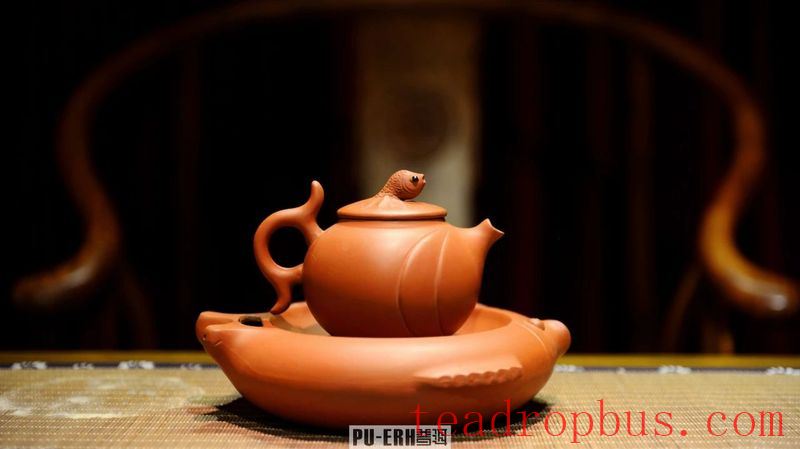
There Must Be a Vessel for Tea
Since the day people started Drinking Tea, tea and its vessel have been in a complementary relationship. Drinking tea is not just about drinking the tea water but also about savoring the ambiance and engaging in an activity imbued with artistic flair, seeking enjoyment at a spiritual level. In this process filled with beauty, the tea vessel is no longer merely a container for tea but has become an essential prop to enhance the quality of tea tasting, integrate into the tea art space, and highlight the culture of tea. The advocacy of tea-drinking has further spurred the pursuit of refined and exquisite tea vessels, accelerating their evolution and development. It can be said that the history of Chinese Tea culture is essentially the history of changes in the styles of tea vessels. Now, as Pu'er Tea culture continues to spread and its market expands, Pu'er tea is revitalizing the entire market for tea utensils while also driving their evolution and innovation.
Folk Pu'er Tea: Drinking Without Fixed Rules
Every tea vessel conceals the tea stories of an era, partially reconstructing the past prosperity of tea culture and conveying the transformations in methods, customs, and practices related to making, brewing, drinking, and storing tea in ancient times.

Over the past decade, the resurgence of Pu'er tea and the improvement in people's living standards have fueled the comprehensive revival of Chinese tea culture, elevating tea from being a part of daily necessities (“firewood, rice, oil, salt, soy sauce, vinegar, and tea”) to a realm of spiritual pursuits (“music, chess, calligraphy, painting, poetry, wine, and tea”). If we extend the timeline and look back from a future point years later, this wave of Pu'er tea market enthusiasm will undoubtedly shine brightly in terms of its impact on the advancement and development of tea vessels.

In the daily lives of ordinary people, Pu'er tea is brewed in large, rough porcelain bowls. In the main Pu'er tea-producing regions and throughout Yunnan, there are even more ways to consume Pu'er tea. These include the sour tea, roasted tea, and bamboo tea of the Bulang people; the cold mixed tea and boiled tea of the Jino people; the steamed tea, roasted tea, and earthen pot tea of the Hani people; the roasted jar tea, clear tea, salted tea, and oil tea of the Yi and Bai people; the bamboo-scented tea of the Dai and Lahu people; the iron plate roasted tea and pounded tea of the Wa people; and the oil and salt tea of the Lisu people. Among these, the Bai people's three-course tea is particularly ceremonial. These tea customs of ethnic minorities, which remain preserved in daily life, vary in preparation, consumption, and utensils, and some even retain the ancient practice of “eating” tea. Han Chinese tend to be more refined, primarily using covered bowls to drink Pu'er tea, which differs significantly from the drinking methods of other ethnic groups across Yunnan.
Pu'er Tea: Promoting the Flourishing Diversity of Tea Utensils
The current spread of Pu'er tea is characterized by significant marketization. Marketization requires relatively standardized brewing vessels and procedures, which historically were lacking in Pu'er tea. Now, when selling or promoting Pu'er tea culture, one cannot follow the folk practices where some ferment it into pickles, others make it into butter tea; some boil it, others brew it; some use covered bowls, others use rough porcelain bowls, etc. Such non-standardized drinking methods are detrimental to the marketization of Pu'er tea. Fortunately, Hong Kong and Taiwan, which took the lead in Pu'er tea culture, have already made beneficial explorations in this area.

Pu'er Tea: The Four Famous Clays in the Heat of the Craze
Similar examples abound in the world of pottery. Jian Shui purple clay is one of the four famous clays in China, and the famous Yunnan dish, Steamed Chicken in a Pot, uses a pot made of Jian Shui purple clay. Despite this, with the development of the times, the demand for everyday pottery such as jars and pots has decreased, leading to the bankruptcy and auction of the Jian Shui County Arts and Crafts Pottery Factory in 2007. Of course, there were institutional factors involved, but during those years in Yunnan, the enthusiasm for Pu'er tea was mainly concentrated in tea-producing areas and tea enterprises. Many people only knew the name of Pu'er tea and had not truly experienced or understood it. When many Yunnanese finally began drinking Pu'er tea, Jian Shui purple clay found new vitality.

Originally published in Pu'er Magazine
December 2015 Issue
If there is any infringement, please contact us for removal.